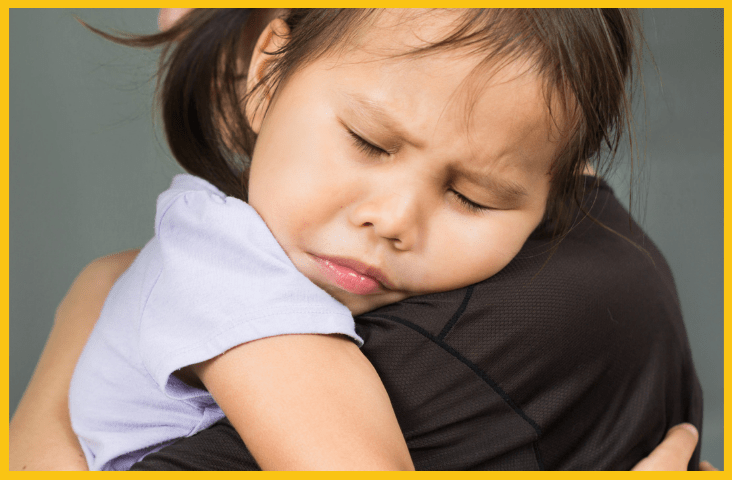
Why it’s time to ditch time outs
Time outs are often suggested as gentle alternatives to more punitive discipline strategies like spanking or yelling. They are considered by many to be an effective and safe discipline method for children who are misbehaving or not responding to verbal warnings.
The assumption is that by removing a child from a situation and having them sit calmly on their own for a period of time, the child has an opportunity to regulate their emotions, reflect on their behaviour and calm themselves down.
But there is a big difference between quiet and calm.
The problem with time outs
Time outs are based on an incorrect premise about behaviour. They assume that a child’s behaviour is intentional. They assume that behaviour is a choice and that providing consequences for that choice will result in a child making different choices next time.
However, neuroscience tells us that this is simply not the case. Much of what we call misbehaviour in children is developmentally appropriate. Children simply do not have the skills to respond differently in the moment. Their immature brains are not yet able to inhibit impulses or consider the long term consequences of their actions. Especially when they are stressed or overwhelmed.

In fact, much of what we consider to be misbehaviour in our children is better viewed as stress behaviour.
When children are overwhelmed by the demands of a situation and do not have the skills to meet our expectations, they become stressed. Their nervous system feels threatened and moves into protection mode, trying to reduce the stress on their system and keep them safe. And at this point, all reason, logic and control flies out the window.
Behaviour is no longer a choice. It is an instinctual reflex designed to keep your child safe.
Consequences are of no use to your child at this point. What they need is safety.
Creating safety through connection
Safety for us humans is about more than just physical safety. It is also about emotional and relational safety. We feel safe when we feel connected to others. It is this connection – empathy, validation, understanding, acceptance of our whole selves – that creates the necessary conditions for learning and regulation.
Separation from a primary caregiver – whether physical or emotional – is experienced as a threat. It creates fear and stress and further overwhelms the nervous system. Children need us. Their nervous systems need us. Humans are designed to regulate in the presence of others. Within safe, resonant relationships.

Time outs create separation. They create physical separation when we leave children alone. And they create emotional distance as well, as we withdraw our attention at a time when children feel distressed and need validation and emotional support to deal with big feelings.
Time outs do not allow for learning. They do not facilitate regulation. Because these things cannot happen when children are stressed, afraid or alone. Time outs send a message to children that they are alone with their big feelings. That we do not want to hear about their difficult emotions. That we do not accept all of them. And so, time outs create quiet children. Children who shut down their emotions and hide their struggles from us. They create quiet children. But they do not create calm children.
What to do instead of time outs?
If we want to see a change in behaviour, what we need to focus on is regulation. Because regulated, connected kids who feel safe? They behave well. This means the answer is not to isolate our children, but to bring them closer.
Rather than time outs, I recommend trying time ins. During a time in, you remain close to your child, offering connection and support as they work through their big emotions. You provide co-regulation – offering them cues of safety and comfort so their nervous system can calm and they can learn the skills they need to – eventually – self regulate.
How to implement a time in
1) Set up a calm down corner
A calm down corner is a dedicated space for you and your child to go together when they need a time in. It is a safe, comfortable and inviting space for your child to express how they are feeling, and to calm their mind and body with your support. It is helpful to have your child help you set this space up and to choose some calming tools or resources to keep in the space. You may like to include cosy cushions, affirmation cards, music, a teddy or soft doll to cuddle, stress balls or other sensory tools. This will be entirely up to you and your child – every nervous system is different and everyone feels calmed in different ways
2) Identify triggers
Prevention will always be better than cure. If you are noticing challenging behaviour from your child, think about what may be causing them stress. I like to start by thinking about their basic needs. Are they hungry, tired, in pain or needing the bathroom? Do they have unmet sensory needs? Do they need to move around, are the lights too bright, do they need less noise, or some calming touch to feel regulated?
Are they experiencing social stress? Perhaps they feel disconnected from you? Maybe they are having friendship difficulties or experiencing social anxiety or isolation. Perhaps it is a conflict with a sibling that they don’t know how to manage. There are a variety of things that can cause stress on a child’s immature nervous system, and sometimes identifying those stressors will require a bit of detective work on our part.

So look for signs of dysregulation. Is your child pacing or moving around more than usual? Speaking loudly? Grimacing or scowling? Are they stomping, clenching their fists, whining? All of these could be early warning signs that your child is struggling to cope with stress and that a meltdown is imminent. There’s no need to wait until the meltdown happens. Now is the time to implement a time in and visit the calm down corner together.
3) Emotion Coach
During a time-in, it is not your job to put an end to your child’s emotions, but to support your child through their emotions. You can do this through a process called emotion coaching. This involves validating how your child feels and offering empathy as well as helping your child identify and label how they are feeling. This helps children understand that all emotions are allowed and gives them the language and skills they need to recognise how they feel and talk about it with you. Once your child is calm, you can problem-solve with them and also set any boundaries required to keep everyone safe.

4) Give yourself a time out if needed
A dysregulated adult cannot calm a dysregulated child. If you yourself are struggling with big emotions, it’s ok to take a break from your child and calm yourself down. In fact, I recommend it. Stepping away from your dysregulated child for a few moments will not cause them harm. In fact, it’s likely to cause far less harm than remaining nearby in your dysregulated state.
Tell your child something like, “I see you are having some big feelings. I am feeling some big feelings in my body right now too. I’m going to take a break to calm my body so that I can come back and help you calm yours too.”
And then remove yourself from the situation. Take a few deep breaths, splash your face with water, step outside for some fresh air – whatever it is that helps you feel calmer in the moment. Then you can return to your child feeling regulated and ready to help them with their own big feelings.
Not only will this strategy prevent you from reacting in a way that you later regret, or that causes damage to your relationship with your child, it also models for your child an appropriate way of managing big feelings! It helps them understand that everyone experiences big feelings sometimes, but there are always things they can do to manage those feelings safely.
Sarah Conway is a child and adolescent psychologist, mother of 4, and founder of Mindful Little Minds. She has over 15 years of experience working in mental health with children, teenagers, and families. Sarah’s mission is to help parents move away from punitive parenting strategies and towards mindful, intentional parenting that builds emotional intelligence in kids and parents alike. As a busy mum herself, she knows firsthand how difficult mindful parenting can be, particularly when it was never modeled by our own parents. That’s why she provides parents and children with simple, practical strategies and tools that help them learn to manage emotions – together. She believes that changing the way we parent will change the world.



